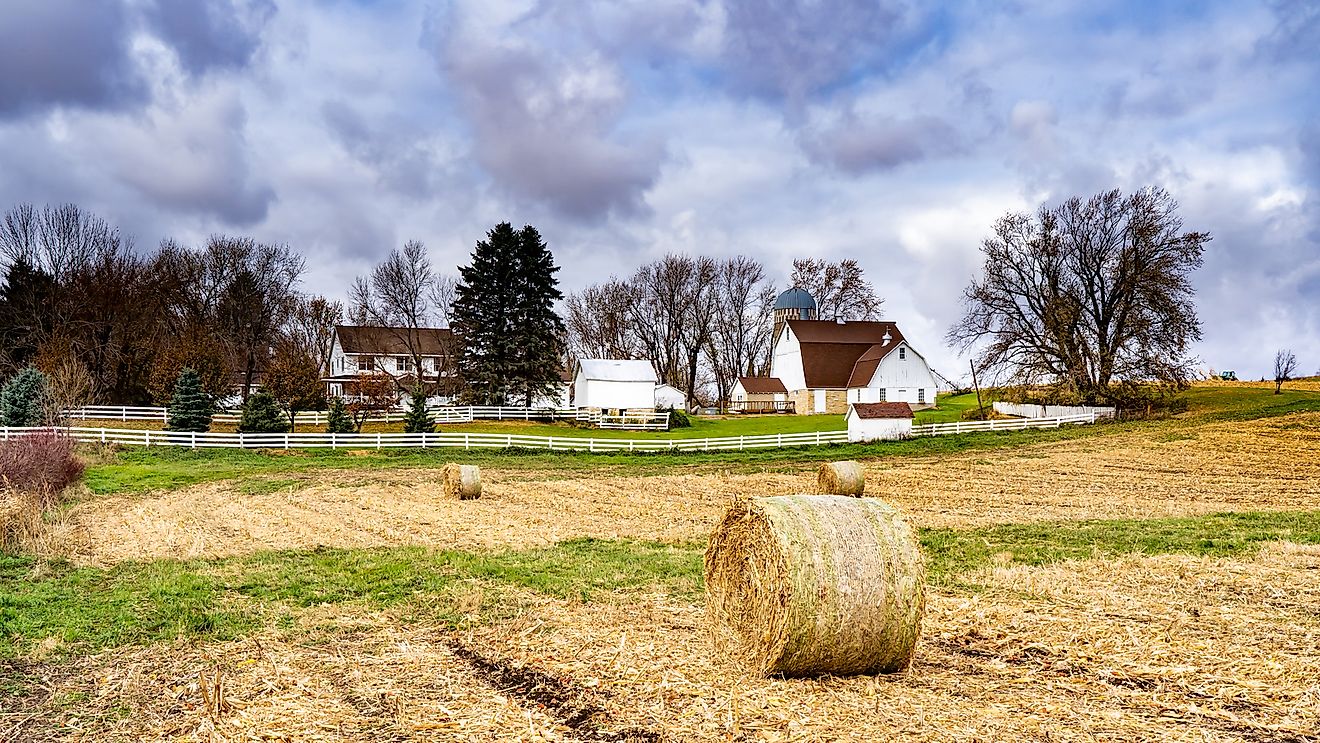What Are The Biggest Industries In Minnesota?

Minnesota has the 17th largest economy in the United States, with a GDP of about $375,000. Over the past decade, the economy stagnated due to low productivity despite employees registering longer work hours than most other states. The state lags behind the national average on per worker GDP, output per worker, personal income, and output per hour worked. Minnesota is only able to achieve personal income per capita and above-average GDP due to its high labor force participation rate. The economy of early Minnesota depended on natural resources such as timber and iron ore, which stimulated the development of ancillary services such as manufacturing, infrastructure, and agriculture. In the 1960s and 70s, the dependency on these resources declined, and sectors such as service-related industries began to flourish.
Agriculture
Agriculture has been a core industry of Minnesota since the beginning and shows no signs of slowing down. The sector continues to grow and support the economy of the state, from crop production to agricultural education and thriving agribusiness. The state is home to about 74,500 farms, spread across 26 million acres of fertile land. In addition, there are more than 1,000 agricultural and food processing firms. In total, agriculture employs about 340,000 Minnesotans and is valued at over $75 billion. Minnesota has the 4th highest agrarian income in the United States after California, Iowa, Texas, and Nebraska. It also ranks among the top 10 in the production of sugar beets, sweet corn, soybeans, wild rice, and oats. The state ranks second in hog sales and 4th in milk production, but excess supply has led to low prices. The Department of Agriculture estimates that the number of dairy and hog farms in Minnesota has decreased by half compared to 1997.
Manufacturing
There are about 8,300 manufacturing firms in Minnesota, producing and processing a variety of products. Manufacturing is among the stable economic sectors of the state, with employment rising over 11% since 2010. Manufacturing accounts for about $55 billion or 15% of Minnesota's GDP. The industry employs about 320,000 people and accounts for 15% of wages paid in the state. About 40% of Minnesota's Fortune 500 companies are in the manufacturing industry, while a further 17 Fortune 500 companies are headquartered in the state. Small and medium manufacturers also thrive in Minnesota. Despite the growth, manufacturers are having a difficult time finding skilled workers. The problem is set to worsen as demand for manufacturing jobs is poised to skyrocket in the new decade. To solve this challenge, Minnesotans, just like all other Americans, need to improve their perception of manufacturing. The good news is that 80% of Americans consider manufacturing a critical aspect of economic prosperity and are optimistic that working in the industry can raise their standard of living.
Mining
Mining in Minnesota began in the 1800s when prospectors searching for gold came across iron ore. The ore did not attract interest until the 1910s, when it was mined and shipped from Mesabi, Vermilion, and Cuyuna ranges. By the 1920s, mining had become a major player in the economy of Minnesota. A century later, iron ore takes up a large chunk of mining activities in the state. Sadly, the industry is on a gradual decline and currently accounts for a minuscule percentage of Minnesota's GDP. There are about 210 mining businesses that employ roughly 5,700 people. Mining jobs are among the best paying in northeast Minnesota, but they are unstable, and employees risk losing their jobs at any point. Long-term employment has dropped thanks to outsourcing and automation. The future of the industry looks bleak due to declining investments and cheaper imports. Several proposed mines have failed to take off due to environmental concerns.
Energy Production
Minnesota does not produce crude oil, but its Pine Bend Refinery is the largest of any non-oil producing state. At the beginning of the millennium, Minnesotans consumed about 7.2 million gallons daily, and since then, the consumption has been rising at about 2% annually. Pine Bend and St. Paul Park Refinery produce about 70% of the gasoline while the rest comes from Superior Refinery in Wisconsin and Mandan Refinery in North Dakota. Ethanol fuel is also produced in Minnesota as state laws require consumer gasoline contain 20% ethanol. Wind turbines are popular in the windy region around Buffalo Ridge.
Service Industry
About three-quarters of employed Minnesotans are in the service industry, which includes financial, healthcare, insurance, hospitality, and tourism sectors. Urban cities are among the most popular tourist destinations. The Mall of America in Bloomington is the third-largest in the country after American Dream Meadowlands and King of Prussia Mall. As the birthplace of Target chain stores, Minnesota attracts thousands of tourists seeking to buy goods at discounted prices. The Indian Gaming Regulatory Act of 1988 created jobs for the tribal communities, and since then, gambling has grown to be a significant source of income.











